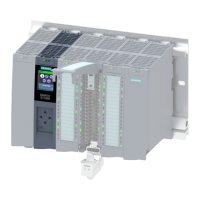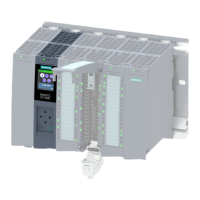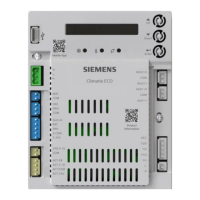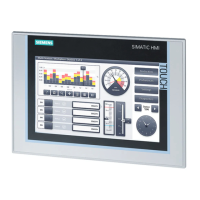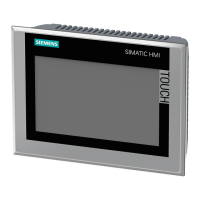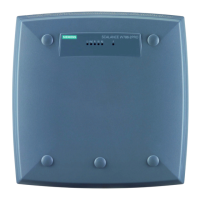Function Description Additional information
OPC UA With OPCUA, you can exchange data via an open and
manufacturer-neutral communication protocol.
The CPU can act as OPC UA server. The CPU acting as the
OPCUA server can communicate with OPCUA clients.
In turn, as an OPC UA client, the CPU can access an OPC
UA server, allow the OPC UA server to run methods and
read out information from the OPC UA server.
Through OPC UA Companion Specification, methods can
be specified in a uniform and vendor-neutral way. Using
these specified methods, you can easily integrate devices
from various manufacturers into your plants and produc
tion processes.
Communication function manual
(https://support.industry.siemens.
com/cs/ww/en/view/59192925)
Configuration control You can use configuration control to operate different
real hardware configurations with a configured maxim
um configuration of the hardware. This means especially
in series machine manufacturing you have the option of
operating/configuring different configuration variants of
a machine with a single project.
ET200SP System Manual
(https://support.industry.siemens.
com/cs/ww/en/view/58649293)
PROFINETIO
RT (real time) RT prioritizes PROFINET IO telegrams over standard tele
grams. This ensures the required determinism in the
automation technology. In this process the data is trans
ferred via prioritized Ethernet telegrams.
IRT (isochronous real time) A reserved bandwidth within the send clock is available
for IRT data. The reserved bandwidth ensures that the IRT
data can be transmitted in time-synchronized intervals,
unaffected by other high network loading (e.g. TCP/IP
communication or additional real time communication).
Update times with maximum determinism can be real
ized through IRT. Isochronous applications are possible
with IRT.
Isochronous mode The Isochronous mode system property acquires meas
ured values and process data and processes the signals in
a fixed system clock. Isochronous mode thus contributes
to high control quality and hence to greater manufactur
ing precision. Isochronous mode reduces possible fluctu
ations of the process reaction times to a minimum. Time-
assured processing makes higher machine cycles pos
sible.
MRP (Media Redundancy
Protocol)
It is possible to establish redundant networks via the
Media Redundancy Protocol. Redundant transmission
links (ring topology) ensure that an alternative commu
nication path is made available if a transmission link fails.
The PROFINET devices that are part of this redundant net
work form an MRP domain.
RT operation is possible with the use of MRP.
MRPD (Media Redundancy
with Planned Duplication)
The advantage of the MRP extension MRPD is that, in the
event of a failure of a device or a line in the ring, all other
devices continue to be supplied with IO data without
interruption and with short update times.
MRPD is based on IRT and MRP. To realize media redund
ancy with short update times, the PROFINET devices par
ticipating in the ring send their data in both directions.
PROFINET function manual
(https://support.automation.siemens.
com/WW/view/en/49948856)
16
CPU 1512SP-1 PN (6ES7512-1DM03-0AB0)
Equipment Manual, 11/2022, A5E33591411-AE
Product overview
3.3 Firmware functions

